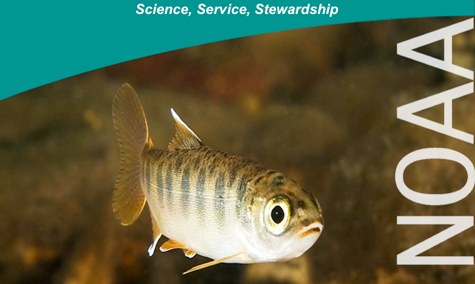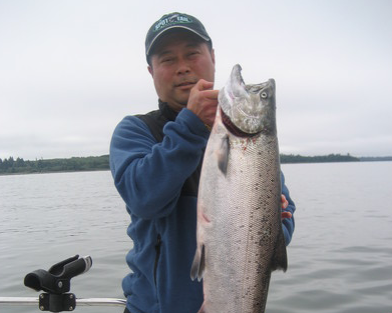|
Unlocking the Mysteries Beneath the Surface
|
|
|
As the Deepsea Challenger, powered by the well-known film director James Cameron, touched bottom in the deepest part of the ocean back in March, the possibilities for discovery in the underwater world became seemingly endless. It is estimated that the ocean supports roughly 50 percent of all species on earth but more than 95 percent of the ocean is yet to be explored, and there is no telling what else is out there to be discovered. The Deepsea Challenger's voyage was not the first time humans have made the descent 36,000 feet below the surface, but advancements in technology have made it possible to stay on the ocean floor for a longer period of time to collect scientific samples and videos. The more we can learn about life under the surface, the better we can understand and manage our marine resources.
The report A Census of Fishes and Everything They Eat: How the Census of Marine Life Advanced Fisheries Science published in Fisheries magazine highlights the importance of managing the ecosystem as a whole instead of from the standpoint of a single-species fishery. The first Census of Marine Life was an international, decade-long effort (2000-2010) by over 2,700 scientists in more than 80 countries who study marine biodiversity. There are roughly 16,764 marine species that have been verified (as of Feb. 19, 2010) by California Academy of Sciences and it is estimated that there are still another 5,000 species to be discovered, each one dependent on another for survival. As we begin to understand the rich diversity beneath the surface, we can better manage populations of fish such as forage fish, which are an important link between the biomass of the lower trophic level to that of the upper trophic level in the food chain. While they are just as important as the prized salmon and tuna, management is difficult because many believe that the calculated predation rates and commercial harvest is often underestimated.
Throughout history, humans have looked to the sea as an important source of protein. In fact, further results of the census revealed that humans have impacted local fish stocks longer than previously believed, but these negative impacts have been on the rise in the last century. Overall, the census proved to be effective in gathering vital information, evaluating current issues and identifying areas lacking research in marine science. It even helped to advance fish monitoring technologies. However, it also proved that there is still much research to be done. For example, areas such as seamounts (undersea mountains) provide nutrients and habitat for much of the ocean's marine life and yet very little is known about many of the seamounts in existence. As continued exploration reveals how much more is yet to be discovered, it's clear that ongoing research gets us closer to understanding the world beneath the surface, and to developing technologies that allow us to follow fish further into the deep.
|
|
|
|
|
IN THE NEWS: Recent stories you might have missed...
|
Feds unveil plan to save endangered coho salmon
Mercury News  Federal fisheries managers on Wednesday proposed an ambitious new plan to save an endangered population of coho salmon on California's central coast. The National Oceanic and Atmospheric Administration unveiled its far-reaching restoration plan at a meeting on Wednesday, the Santa Cruz Sentinel reported (http://bit.ly/NVRKZe). The species was once found abundantly in streams from San Francisco south to the Santa Cruz area, but is now found only in Scott and San Vicente creeks... Read more>
|
|
Columbia River salmon and steelhead run-size updates
Seattle Times

Through Wednesday, Sept. 5, there were 130,323 adult fall chinook counted at Bonneville Dam. The cumulative and daily chinook counts to date are below average for this time of year. Counts include 104,854 bright stock fish (URB and MCB groups) and 23,347 adult tules (primarily from Spring Creek Hatchery). The Technical Advisory Committee (TAC) has not updated the chinook run sizes but thinks the tules are tracking near the preseason forecast of 60,200 fish returning to the mouth of the Columbia... Read more>
|
Tribes Oppose Oregon Measure to Ban Gillnetting
OPB

Columbia River Indian tribes are opposing Oregon Ballot Measure 81, which would ban fishing with gillnets in the state. The four tribes, which include the Yakama, Umatilla, Warm Springs and Nez Perce, are the latest group to oppose the ban. The measure does little to rebuild salmon populations, said Kathryn Brigham, chairwoman of the Columbia River Inter-Tribal Fish Commission, in a press release... Read more >
|
El Nino 2012: Latest data continues trend for winter rains in California
Examiner

The latest data from NOAA's Climate Prediction Center continues to point toward much-needed substantial rainfall this winter in California. The previous series of extended monthly outlooks suggested a broad belt of above normal rainfall for much of the southwestern U.S beginning late this fall, and the most recent models released on Aug. 16 continue this trend, with some additional emphasis on more concentrated precipitation for much of California... Read more >
|
|
Aquaculture to top 60% of fish production
World Fishing & Aquaculture

Research conducted by the Worldwatch Institute has found that wild capture was 90.4 million tons in 2011, up 2% from 2010. Aquaculture has been expanding steadily for the last 25 years and saw a rise of 6.2% in 2011.
Humans ate 130.8 million tons of fish in 2011, with the rest going to non-food uses such as fishmeal, fish oil, culture, bait, and pharmaceuticals. The human consumption figure has increased 14.4% over the last five years and consumption of farmed fish has risen tenfold since 1970, at an annual average of 6.6% per year... Read more >
|
|
|
|
|
|